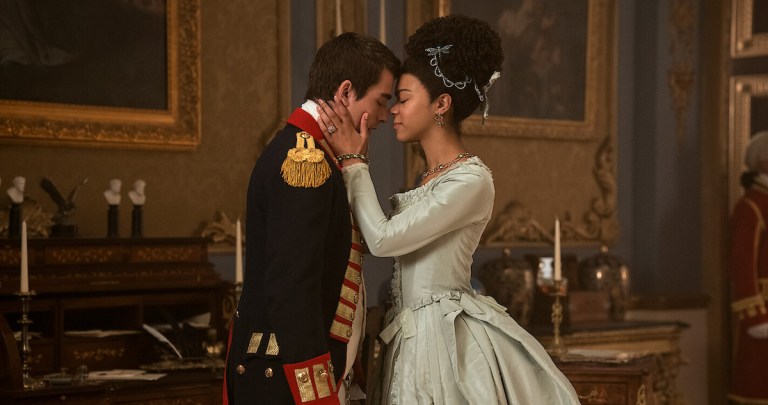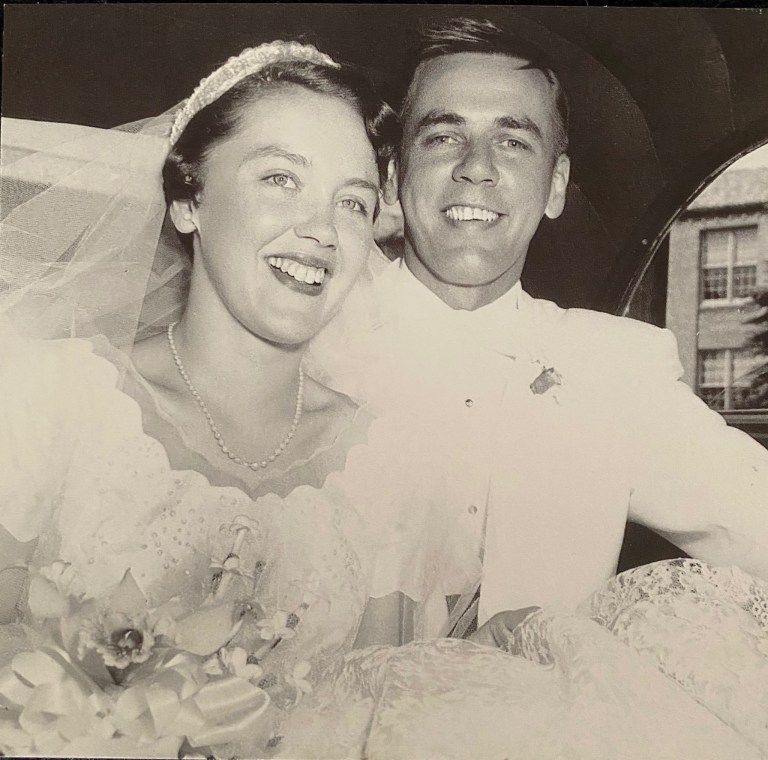Shopping The House Of The Dead
There’s a certain sense of guilt associated with dragging children into a strange house to look through the belongings of people who are most likely dead, infirmed, or in some state of personal or financial distress.


By the time we arrived at the estate sale in Garden City, a suburban housing plan about 13 miles east of downtown Pittsburgh, customers were already snaked in a line across the lawn.
Most of the customers were huddled in the shade of a tall tree, with flushed red cheeks and foreheads beaded with sweat, fanning their faces with whatever they could find — old magazines, baseball hats, or fluttering hands. Some in the crowd appeared to be casual shoppers, holding the paintings and coffee mugs, toys and scarves they intended to buy. Others were more determined, their arms cradled deep with a carefully chosen assortment of items: waffle iron, postcards, sewing supplies, lamps, and old glassware.
It was late June and a heat wave had taken hold of Western Pennsylvania. Local parks were empty while public pools overflowed with people desperate for relief. On the radio, citizens were reminded to drink water and the elderly were warned to remain indoors and stay cool. Pets should not be left unattended in a vehicle, it was reiterated, and sunscreen with a high SPF was recommended for those braving the outdoors.
From where we parked — my wife in the passenger seat, our two young sons in the back — I could see the full spectacle of the sale. The parade of people meant there were cars everywhere: Chryslers and Subarus, Hondas and Chevys parked bumper to bumper in a crooked line that wrapped the corner of Garden City Drive. Several of the automobiles had been carelessly brought to a halt, like the driver had barely shut off the engine before leaving his seat. Others sat lopsided with two wheels in the grass and two on the pavement, framed by a painted white line intended to be a sidewalk.
As I unbuckled my 15-month-old son from his car seat, while answering a scattershot of questions from my 5-year-old son, I wondered if this was a mistake. Large crowds gathered in tight spaces tended to feed my anxiety. Oppressive heat didn’t ease the sensation. Not to mention the baby had been teething for weeks, and my oldest was sleep drunk from staying up too late the night before. None of these circumstances promised great success, and my concern must have been visible.
“I’ll wear the baby,” my wife offered, pointing to the fabric sling in her hand. Her pragmatic thinking was often the antithesis to my perpetual crisis machine. Relieved, I helped her tuck the baby tight against her chest — situating his arms and legs in what looked like origami — before asking my 5-year-old to take my hand so we could cross the street.
The house, a split-level ranch situated in a quiet stretch of Garden City, stood just beyond the crowd of customers, between a wooded area and playground dotted with weeds, where an old metal sliding board pointed to the sky and a geodesic jungle gym rusted in the corner. It was the type of house in the type of neighborhood that once promised the idyllic suburban life that so many Americans longed for in the wake of World War II:
In April 1955, Wanda Jennings, Mrs. America of 1954, was on hand to greet visitors at the opening of the latest development in fully–planned community living — Garden City in Monroeville, Pa. This 600-acre development would be built partly on farmland owned by the Graham family near the center of Monroeville. Designed and constructed by the Sampson-Miller Associated Companies, it would offer 1500 3 and 4-bedroom homes at moderate prices.[1]
Fully planned community living, however, came with a shelf life. By the early 1990s, when I was in high school and played in a hardcore band that sometimes practiced in a garage at the other end of Garden City Drive, the once-lush lawns of these neatly ordered homes had already started turning to crabgrass. Wealthier whites were migrating further east, where new housing developments built on freshly parceled-out farmland promised a continuation, or perhaps a reboot, of the suburban dream.
_____
With my 5-year-old son still holding my hand, we walked the curved concrete path that led to the porch and an open front door, past a woman with sparrows tattooed across her chest who worked for the estate sale company. She used an adding machine to tally the purchases of the growing mob on the lawn, and attempted to smile while looking overwhelmed.
Inside the house, a small foyer opened to a living room on the immediate right and a kitchen straight ahead, with an adjacent dining room joining the two. People were everywhere: rifling through drawers and cupboards in the kitchen, circling a table of housewares in the dining room, and lording over banquet tables heaped with jewelry in the living room.
My 5-year-old spotted a dish filled with gold and silver rings almost immediately. “These look interesting,” he said, sliding the adult-sized rings onto his small fingers before I could tell him not to. Next he grabbed a Lucite block that had a colored gem frozen inside. He held it in his hand, raised it to my face so I could get a better look. “Interesting,” I said, repeating his favorite word of the last several weeks.
There’s a certain sense of guilt associated with dragging children into a strange house to look through the belongings of people who are most likely dead, infirm, or in some state of personal or financial distress. In essence you’re walking into what may be the beginning, or perhaps the end, of someone’s bad experience. It’s what often makes an estate sale such a grim transaction. For a small window of time, usually no more than a day or two, a stranger’s private life is made public for the sole purpose of being systematically dismantled. Everything, it turns out, has a price, no matter how sentimental or irreplaceable it once seemed: the family portraits from J.C. Penney are tossed in a pile and priced to sell; jewelry and half-spent bottles of perfume, originally gifts for birthdays or anniversaries, lay clustered on an old card table. It’s a process that takes a home and swiftly reduces it to itemized debris. Which is the intent. But the process also has a tendency to strip away all traces of emotion, muting the lives of the people whose objects are on display. With little fanfare a lifetime of possessions is sold off. And what doesn’t sell is hauled to auction or donated to a thrift store. Or in many cases, relegated to a landfill.
Around us, shoppers mumbled to themselves and their companions, some remembering how their mother had a necklace like that, or how their father used to wear the same cologne they now held in their hands. Nostalgia is forever discussed at an estate sale, with strangers offering candid stories about their lives, often unprompted, and giving the nuanced details about the personal connection they have to the objects in their hands. In some ways that connection can be cathartic; in other ways, drug-like.
A short flight of shag-carpeted steps led to a bank of bedrooms lined along a narrow hallway. One appeared to be the parent’s, awash in flowery décor with a queen-sized bed the centerpiece of the room, while the other two showed traces of children. Rock albums from the 1970s — Kiss, AC/DC, and Peter Frampton — were one set of clues, old Golden Books and scattered stuffed animals the others. Each object plotted an incomplete timeline from toddlerhood to adolescence. And these objects stirred a familiar sadness I often feel at an estate sale.
I wondered what happier times looked like in the house. For example, the nights a teenage son or daughter might have spent working on algebra homework while listening to “Detroit Rock City” under a pair of headphones, his mother and father back in the kitchen cleaning up the dishes from dinner. Or the infant son or daughter who may have sat in a diaper on that green shag carpet when it still smelled factory fresh, flipping through the pages of Scuffy the Tugboat or some other Golden Book, clutching that small white teddy bear that I saw on the floor, before its fur got matted with dust, and when all its seams were still intact.
I worried what became of the family — the mother and father, sons or daughters — and how I would feel if my former home were opened to the public, its contents liquidated in a matter of days. That quiet conflict permeates the whole experience: the curiosity of the buyers; the necessity of the sellers; and a certain but unspoken violation of privacy.
In and out of the rooms we passed, continuing unguided on our tour. My wife with our baby who pointed at each item that held his attention; beside me our 5-year-old, who bounced between boredom and excitement. As we walked past the other people and through crowded rooms thick with dust, the experience took over. Noise engulfed the house in waves, the way it does at a party, growing loud then quiet then loud again. Overheard conversations played like gossip, with shoppers insinuating the home’s well-stocked liquor cabinet may have indicated alcoholism; or that such a stockpile of books was certainly the result of an unchecked hoarding disorder.
_____
The crowded passage from the top floor to the garage wreaked of mildew. As we reached the bottom of a steep staircase, it felt like we had entered a damp cavern. And the multilevel basement was maze-like in its construction. Set off from the garage was a laundry room, home office, and workshop that revealed another flight of stairs into a windowless game room and a second workshop. The game room may have been, at one time, a fallout shelter. Instead of a metal hatch, however, its entrance was open and littered with 1970s-era Steelers paraphernalia, a portal to the glory days of Pittsburgh football, when quarterback Terry Bradshaw reigned as the Athlete-King of the working class.[2]
As my son waded with me through the decades of accumulation — typewriters, stereo systems, jewelry, family photos, tools, books, etc. — I overheard one of the women working the estate sale tell a customer that the man who owned the house had died 26 years ago. In other words, 1986, the same year the Space Shuttle Challenger disintegrated off the coast of central Florida [3]; and the year Geraldo Rivera opened Al Capone’s vault[4]. Since the owner’s death, his belongings had been preserved in this labyrinth, a shrine to the hobbies, interests, and obsessions that occupied his time.
The man’s name was Mr. Murray. And though I searched, I never learned his first name, or what his friends might have called him. Looking around the house, and after inspecting the objects on his desk, I assumed that he worked as either an accountant or a steelworker — or perhaps an accountant for a steel company, which most likely was the case.
His wife, Mrs. Murray (presumably), had recently moved out of the house, hence the liquidation of its contents. It became too much for her, the estate sale worker said. I couldn’t tell if the worker meant the house had become too much for the widow to maintain, or if living among all her dead husband’s belongings had. A little of both, I imagined.
To examine the layered clutter, it was evident that Mr. Murray spent an inordinate amount of time in the basement. He had an office congested with file cabinets, adding machines, and a massive 1970s-era photocopier. Opposite his office was a workshop loaded with old electronics (turntable, walkie-talkies, reel-to-reel recorder, etc.), schoolhouse pencil sharpeners, wall-mounted notepad holders, and an extensive collection of rocks and gems. A box of geodes caught my son’s attention. He mined through the Amethyst and Quartz like an old prospector, occasionally holding up selections that impressed him. “Look at this one!” he said, his face lit with excitement.
It was easy to visualize what that workshop might have looked like late at night, an oldies station tuned in on the radio, while Mr. Murray examined geodes under the lighted magnifying glass fixed to the workbench. Every inch of that place was packed with half-finished projects and missing pieces sealed in old metal cabinets and tucked away high on out-of-reach shelves. It was the obvious refuge of a tinkerer, a man intent on making new discoveries in the late-night quiet of his suburban escape.
Everything in sight, for the most part, remained untouched. If you hadn’t known better, you would think Mr. Murray had stepped out, maybe gone upstairs for a glass of water and would return any minute. Nearly three decades ago, back when Ronald Reagan was still president, that might have been the case. Today, however, the estate sale signs staked in the grass at intersections throughout Garden City, told the truth.
As the baby started to fuss in his carrier, my wife took the kids next door to the playground. I stayed in the house a few minutes longer to look through Mr. Murray’s office and a box of old postcards I’d been poring over. Some contained personalized notes and canceled postage; others were blank. For the ones left blank, I wondered if Mr. Murray had visited all the places, or at least passed through on business or maybe pleasure, his family in tow. Yellowed corners and seasoning from the moist air made destinations like Niagara Falls, New York and Cleveland, Ohio appear more exotic than they should.
On my final pass through the basement, I noticed a large plastic statue of a cartoon-faced dad, the kind you’d find at a Hallmark shop. It was sitting on a shelf in the void between Mr. Murray’s office and his bunker-like game room. There was a blue ribbon pinned to the statue’s plastic-molded suit coat that read “World’s Best Father.” I assumed it had been given to Mr. Murray as a gift — maybe from his wife during the early days of their parenthood; or perhaps from his children on some long-passed Father’s Day.[5]
Years ago my mother had given the same statue, in a much smaller size, to her own father (my grandfather). When he died, and sometime after my first son was born, my mother passed the statue to me. She had discovered it, along with some other belongings from my grandfather — collectable coins, a wristwatch, his wedding ring — while cleaning her house. Since then the statue’s collected dust in the basement office in my own house, peering at me from its perch on a shelf that overlooks my desk. My 5-year-old son, enthralled with the statue (as he is with so many interesting things), has often asked if I’ll give it to him when he becomes a father. He likes it because it reminds him of a trophy, and also because he thinks the father’s wide-faced grin makes him laugh.
As I walked out of Mr. Murray’s basement, I tucked the statue under my arm and looked for the tattooed woman and her adding machine. The crowd on the lawn had dissipated by that time, and only a small group of customers remained. I handed the tattooed woman two dollars, the price scrawled in black marker on a piece of masking tape stuck to the bottom of the father’s shoe. She handed me a dollar back and reminded me that, since the sale would be ending soon, all items were half price. 




